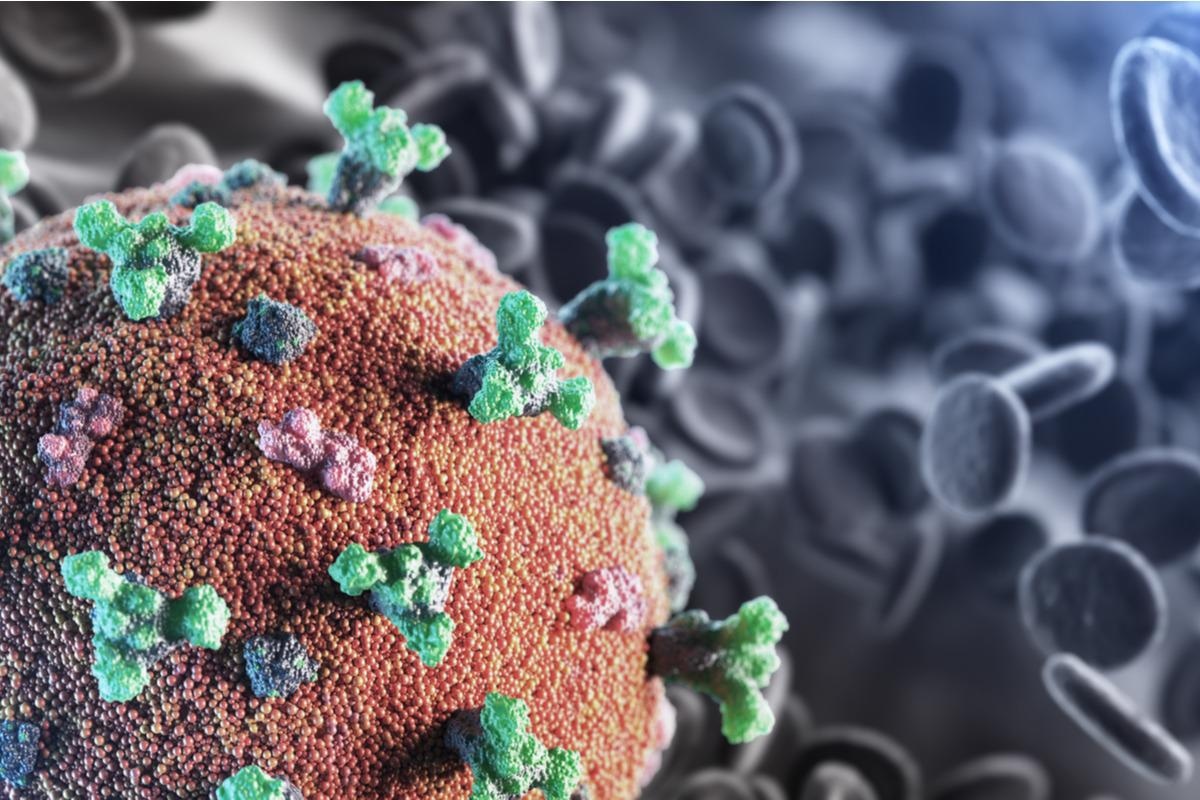Severe acute respiratory syndrome coronavirus 2 (SARS-CoV-2) spread quickly worldwide, causing the coronavirus disease 2019 (COVID-19) pandemic. Although the virus has caused worldwide devastation, millions of fatalities, and long-term morbidity, most infections are asymptomatic.
 Study: T Cells Targeting SARS-CoV-2: By Infection, Vaccination, and Against Future Variants. Image Credit: creativeneko/Shutterstock
Study: T Cells Targeting SARS-CoV-2: By Infection, Vaccination, and Against Future Variants. Image Credit: creativeneko/Shutterstock
The production of neutralizing antibodies and a coordinated SARS-CoV-2-specific cellular response of B and T cells coincide with recovery from infection and restrict immunopathology to build long-term memory to prevent reinfection. Compared to other virus infections, SARS-CoV-2 has a distinct inflammatory signature and encodes several immunomodulatory proteins that modulate cellular trafficking, cytokine responses, and major histocompatibility complex (MHC) class I.
In addition, a wide range of COVID-19 vaccine efficacy from infection has been reported, which correlates with neutralizing antibody titres. In contrast, all vaccine platforms significantly reduce severe infection and morbidity despite lower neutralizing titres, implying that immune responses other than neutralizing titres, such as T cell immunity, can protect from severe COVID-19.
The distinctive characteristics of the T cell response generated by SARS-CoV-2 infection and vaccination and the relationship to common cold coronaviruses (CCCoVs) and variations of concern (VOC), was explored in a review published in Frontiers in Medicine.
The origin of T cell peptides during a SARS-CoV-2 infection
SARS-CoV-2 possesses a 27-kilobase (kb) positive-sense, single-stranded RNA and non-segmented genome, with half of the genome encoded by ORF 1a/b, which is cleaved into at least 16 non-structural proteins (nsp) that function for replication and host evasion. Spike (S), Envelope (E), Matrix (M), and Nucleocapsid (N) are structural proteins, whereas accessory proteins open reading frame (ORFs) 3a, 3c, 3d-2, 6, 7a, 7b, 8, N, and 9b support virus replication and virion formation.
Because the SARS-CoV-2 ssRNA genome is linear, viral replication is ensured by prompt 5′ translation of the replication transcription complex (RTC) of nsp7, nsp12, and nsp13 after infection. The most abundant transcripts early after infection are M > ORF7a > ORF3a > ORF8 > ORF6 (16), which is close to human leukocyte antigen- (HLA)-I peptide presentation during in vitro infection of HEK293-T and A549 cell lines, with the most abundant surface peptides derived from N > M > ORF9b > ORF3a = S proteins, due to genome location and ribosome density. As a result, SARS-linear CoV-2's and positive-sense genome determines the T cell response.
Cross-reactive T cell responses by SARS-CoV-2 infection
Various immunological assays based on epitope presentation leading to T cell receptor binding or activation to elevate surface markers or cytokine release have been used to quantify SARS-CoV-2 T cells. In vitro analysis of functional antiviral cytokine and activated T cells evoked by SARS-CoV-2 infection has used HLA tailored peptide "megapools," selected anticipated cross-reactive peptides, comprehensive peptidome with ORF1 removed, or whole peptidome functional pools.
Once a peptide epitope has been discovered, antigen-specific responses can be assessed using pMHC binding tetramers or multimers, important for downstream cellular characterization. Antigen-specific responses have also been discovered by mapping HLA-presented peptides during in vitro infection to reveal cryptic T cell epitopes within proteins boosted by recent infection in patients with COVID-19, which can be ORF independent. Thus cryptic epitopes can be generated during infection.
The role of T cells in a SARS-CoV-2 infection
Passive transfer studies of immunological serum and T cell subsets from convalescent to naive mice and non-human primates (NHP) have revealed that T cells play a substantial, but unsurprisingly non-sterilizing, role in SARS-CoV-2 infection protection. Furthermore, reducing CD8+ T cells in NHPs with low antibody titres facilitates breakthrough infections, implying that T cell memory will play a key role in regulating disease severity and viral loads of reinfection or vaccine breakthrough when antibody levels decline.
Indeed, post-infection antibody responses decline with time, with only 36% of initial S antibody levels and 7% of initial N antibody levels retained at 1-year post-infection. In comparison, 10% of infected individuals do not seroconvert but maintain long-term stable T cell responses. Higher amplitude T cell responses combined with modest antibody responses were linked to a lower risk of reinfection in a large-scale patient cohort study of health care professionals.
During adult SARS-CoV-2 infection, the size of ORF1a/b-specific SARS-CoV-2 T cell responses does not differ with symptom intensity. Still, it does correlate with shorter disease duration, indicating a pre-existing cross-reactive T cell response that may play a role in COVID-19 mitigation.
Conclusion
Most vaccination platforms sustain protection from severe disease despite declining neutralizing antibodies and variants of concern degrading serological responses, which may be due to boosted T cell immunity even in inactivated vaccines. Due to epitope retention by the viral proofreading endonuclease, SARS-CoV-2-specific T cells' ability to preserve identification of variants of concern may offer long-term protection from severe COVID-19.